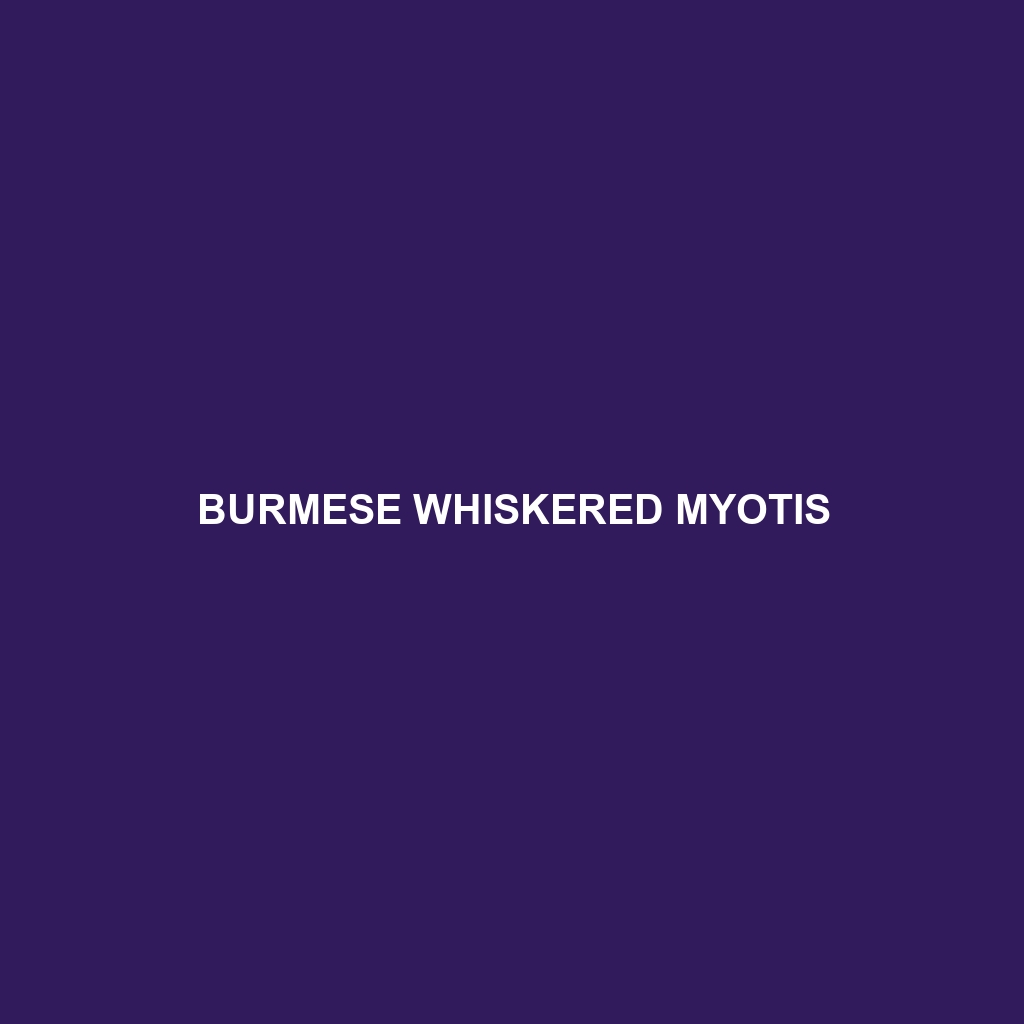Burmese Whiskered Myotis Species Description
Common Name: Burmese Whiskered Myotis
Scientific Name: Myotis muricola
Habitat
The Burmese Whiskered Myotis is primarily found in Southeast Asia, particularly in countries such as Myanmar, Thailand, and parts of Vietnam. This species prefers diverse habitats including tropical and subtropical forests, limestone caves, and open rural areas. They thrive in regions with ample roosting sites and abundant insect populations, which are crucial for their survival.
Physical Characteristics
This bat species is characterized by its small size, with a wingspan averaging about 25 to 30 centimeters. The Burmese Whiskered Myotis has velvety fur that typically varies from light to dark brown, which helps with camouflage in its forested habitat. Notable features include its long, pointed ears and distinct whiskers that lend to its common name. Their slender body shape and elongated wings allow for agile flight as they forage for food.
Behavior
Burmese Whiskered Myotis exhibits nocturnal behavior, being most active at dusk and throughout the night. They utilize echolocation to navigate and hunt insects in mid-air. These bats are often seen in small groups, either roosting together in caves or foraging in nearby areas. Their social structures are fascinating, as they communicate using a variety of calls, enhancing their group interactions.
Diet
The diet of the Burmese Whiskered Myotis primarily consists of insects, particularly moths, beetles, and flies. They are skilled hunters, catching their prey mid-flight. Their feeding habits not only provide sustenance for themselves but also play a vital role in controlling insect populations in their ecosystems.
Reproduction
The reproductive habits of the Burmese Whiskered Myotis vary with environmental conditions, but breeding typically occurs in the warmer months. Females give birth to a single offspring after a gestation period of around 2 months. The mothers nurse their young until they are able to fly and hunt independently, which usually occurs around four weeks after birth.
Conservation Status
The Burmese Whiskered Myotis is currently classified as ‘Least Concern’ according to the IUCN Red List, indicating a stable population. However, habitat loss due to deforestation and urban development poses potential threats to their long-term survival. Conservation efforts are essential to ensure this species’ continued presence in their natural habitats.
Interesting Facts
One fascinating fact about the Burmese Whiskered Myotis is its impressive flying capabilities; they can change direction swiftly and navigate through dense foliage with ease. Additionally, they have been observed to forage at varying altitudes, showcasing their adaptability in different ecological niches.
Role in Ecosystem
The Burmese Whiskered Myotis plays a crucial role in its ecosystem as a natural pest controller. By feeding on insects, they help maintain the balance of various insect populations, which is particularly important for agricultural practices. Their presence also indicates the health of their habitat, making them essential to the biodiversity of Southeast Asian forests.
